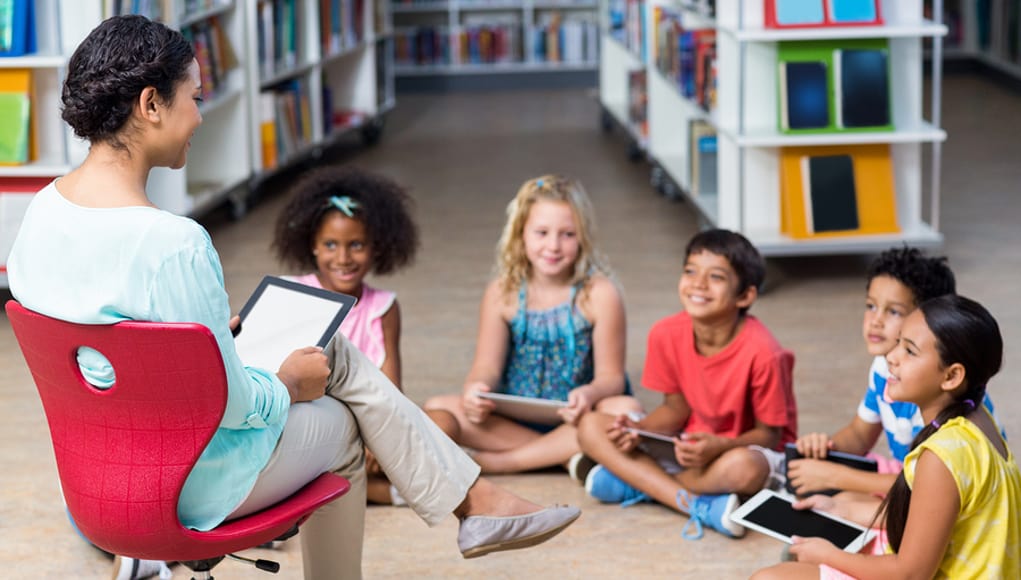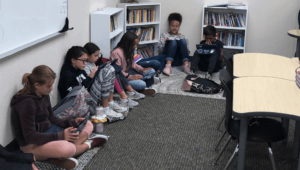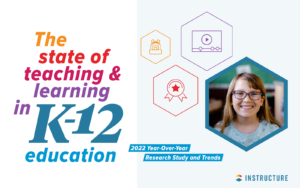The Importance of Balancing Classroom Technology Use

By Kate Durocher
Technology changes in today’s classroom have changed how students learn to read and write. Forget taking notes with a pencil and notebook—today’s students hardly know what a chalkboard looks like, and reading information on paper is rare. Instructors present notes via PowerPoint and students record their thoughts on laptops. Even the boards at the front of the classroom can be digital.
According to research from PBS, 90 percent of teachers have at least one computer or laptop in their classroom, while 60 percent have interactive whiteboards, and 35 percent have a tablet. Nearly 50 percent of teachers are using technology in their online lesson plans, while 45 percent use technology to give students access to web-based educational games or activities.
Technology is a driving force in classrooms, and most educators will agree that technology has made the lives of teachers and students more efficient. But does that efficiency come at a cost? Are today’s generation of learners speaking, writing, typing and reading differently than those who came before them? The answer is yes—although despite some statistics, this might not be as bad as you think.
According to Psychology Today and many other sources, when we use technology it rewires the brain. Constant use of technology intended to help us learn can actually cause distractions and memory loss. Even more alarmingly, Student’s First reports that 60% of all U.S. fourth graders today are not reading at their grade level. One theory is that this poor reading performance can be attributed to texting. Students send an average of 88 texts daily, causing them to become accustomed to auto-corrected spelling errors and shortcuts such as “LOL”. Clearly, technology can negatively affect the learning of students.
But what about the opposite view—how technology has advanced the lives of learners? From giving them unlimited access to the knowledge of scholars, mathematicians and authors through the web, to offering apps and extensions that can give students a hands-on look at the world around them, tech isn’t all bad. For many teachers, it’s a question of balance.
“There are so many things available to us in the technology. We’re using it for every lesson,” said teacher Shannon Baca at Walter White Elementary in Ceres, CA. “It’s still very important to have the writing. We don’t want to lose that skill,” Baca said. “It’s a learning curve. It’s a balance of using tech effectively while still fostering skills essential to life, like writing and reading.”
Many Google Chrome extensions, for example, help teachers use tech as a positive tool to progress learning within the classroom. Stackup allows teachers to track students’ reading online. Students can get recognition and credit for their independent reading in 60 categories. Google Classroom lets teachers distribute assignments and monitor students, while Google Expeditions takes students inside virtual field trips and Kaizena works as a tool for teachers to give students feedback.
With the use of apps like those, the benefits of tech can far outweigh the negatives. In fact, there is substantial evidence that the use of technology in education can help students succeed. For example, one study from Engadget on the use of iPads in education showed that kindergarteners with access to iPads during the school day “scored much higher on literacy tests than students that didn’t use the device.” Another study from Secure Edge Networks on knowledge retention showed that students who were asked to give a presentation on something they were taught were more likely to retain that information.
The positive impact of technology hasn’t only been seen in literacy, though. A 2004 study on Education.com found “a statistically significant increase in math achievement scores when students used digital video,” while others “[suggest] that technology can have a positive impact on the self-esteem of students, especially for at-risk students with low self-esteem and self-confidence.”
Technology will only continue its reach into education and classrooms. While it’s undeniable that the addictive behaviors and shortcuts that can come with technology can be harmful, when used as a tool to further advance learning and paired with teaching essential life skills, technology can do a lot of good.
For more, see:
- 5 Tips to Kickstart Your Classroom Technology Integration
- Bridging the Digital Divide: Strategies to Ensure Student Access to Technology at Home
- Technology’s Unmet Progressive Promise
Kate Durocher is a manager for Red Cup Agency. Follow her on Twitter: @katedurocher11.
Stay in-the-know with all things EdTech and innovations in learning by signing up to receive the weekly Smart Update.





Aarti
Maintain a proper gap between Technology and classroom is very important. Students can not learn all things from technology(like from internet, through google or any other source). So teachers are very important part of student's life. So maintain balance between classroom and technology.
Komal
Today is Digital Age and everybody uses smart phones, tablets or laptop. They can search about any topic. They can learn any thing. But classrooms and teachers are never neglected. They teach children how to learn and how to read. They have special place in this modern age. So technology and classroom are different and we can't change classrooms with technology.
We can use technology in classrooms.
Gateway to School
New American
I agree with this. Technology is really helpful in studying but there should be restricted.
Shiwani
Its in my nature to learn from others. I apply a similar learning approach for blogging as well. A few week ago I started a blogging series by writing things that I have learned, Put to action and seen results.
Thanks for sharing another sooper post.
Prashant Ojha
The students should get a chance to provide ideas to make classrooms better. Most of the time students are either shy or have very less confidence to speak against the institution. I believe that if we ask students and take their suggestions, we could make a difference. Using technology and asking students to take part in it would be the best option.
Geek Squad
This is a very nice discussion over how teachers must balance the use of technology in the classrooms, because technology is everywhere and it is important to limits its use specially when you are dealing with kids. Keep sharing and posting.
Sanya
I really appreciate your efforts put on this blog. You have shared very valuable information regarding Property Management Services . This blog post will be very helpful for people. Thank you so much for sharing this kind of information.
Sanya
Ultimately, after spending many hours on the internet at last we’ve uncovered somebody that surely does know what they are. Thank you for sharing wonderful article. Great post. I will be your regular visitor.